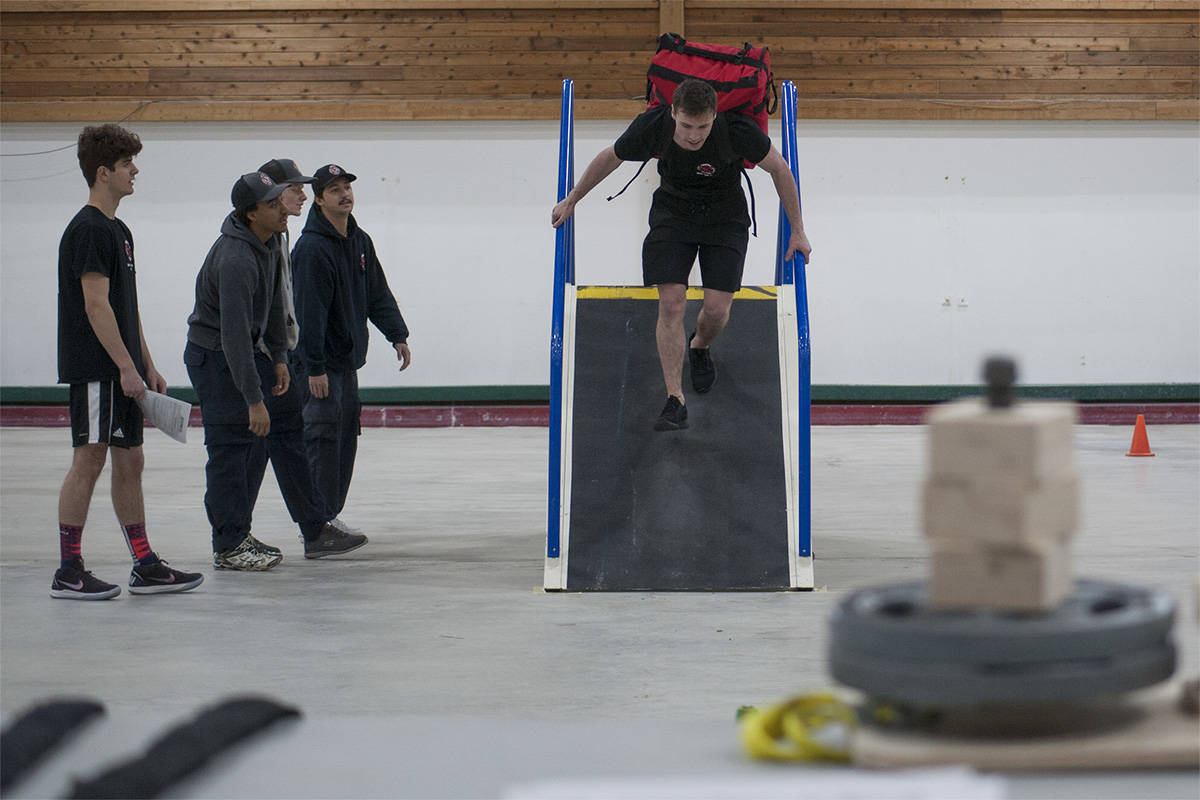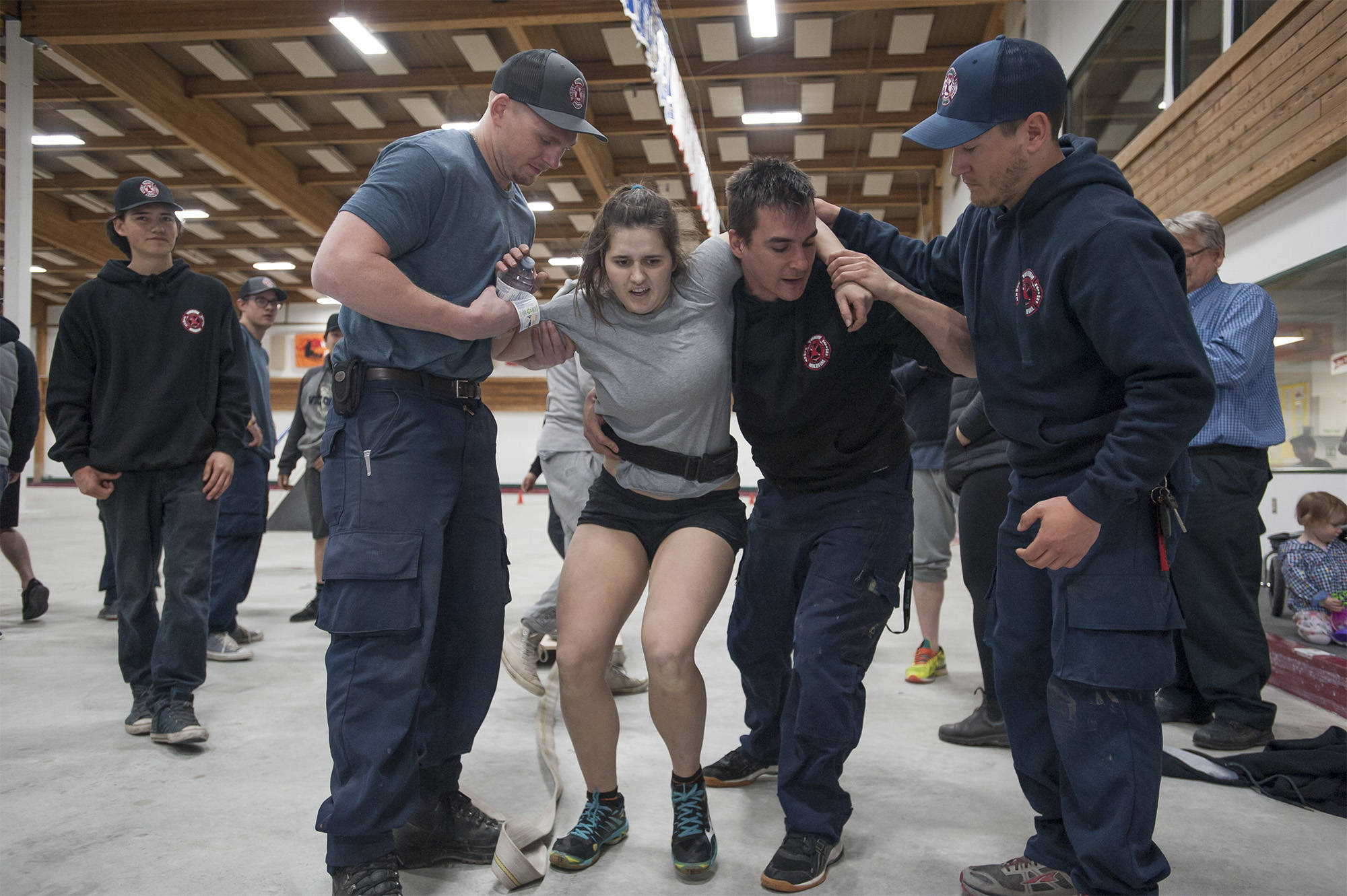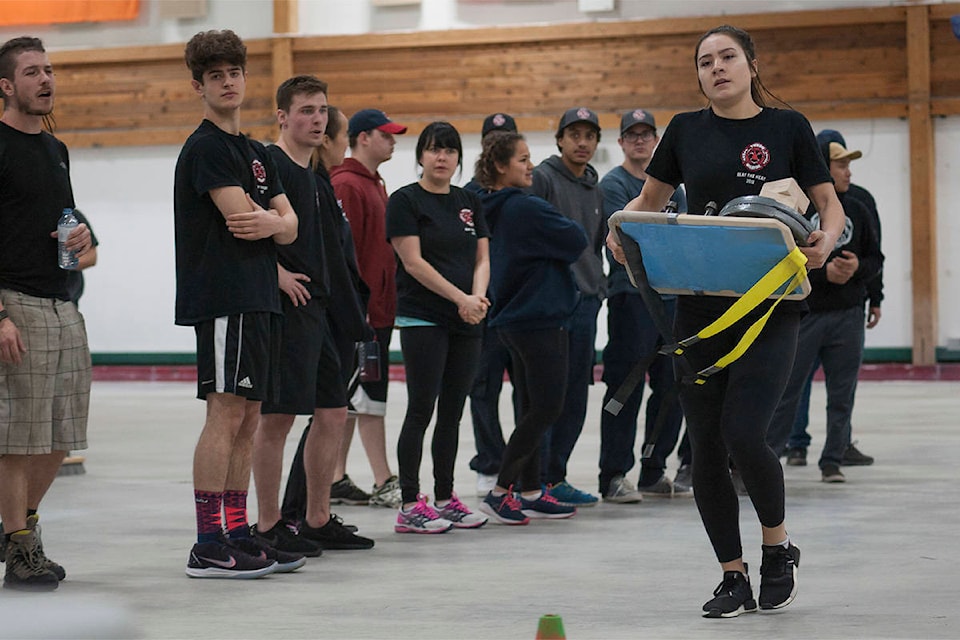Her knees buckle under the weight. As she pulls a sled loaded with weights, a crowd swells, shouting words of encouragement in concert.
For Alice Frost, 19, this marks the final stretch of a strenuous fitness test that’s part of Beat the Heat, a 10-day wildland firefighter certification course.
Frost said she finished the course in 13 minutes and 44 seconds. This puts her into the wheelhouse of a level one firefighter – called “initial attack crews” or those who are first to respond to a blaze within 24 to 36 hours. The national benchmark for this category is 14:30.
“I kind of blacked out in the middle of it,” she said. “It was a lot more difficult than I was expecting. I didn’t realize I would feel so bad at the end.”
Nine women signed up for Beat the Heat this year, the most it’s ever had, representatives said.
(Beyond the fitness test, there’s also fieldwork and safety training).
Chad Thomas, CEO of Yukon First Nations Wildfire, which facilitates the course, said ensuring more women were involved this year took a lot of legwork – advertising in communities and at the Yukon Native Hockey Tournament, was part of the effort.
“This is the largest intake of female firefighters in the history of the Yukon,” he said. “The female firefighter candidates that are here are great. They’ve been working very hard, and they’ve definitely proved to everybody that they work hard and deserve to be here.”
There are four stages to the fitness test, which occurred on April 13 at the Mount McIntyre Recreation Centre, each simulating what it would be like to carry firefighting equipment – about 27 kilograms worth of weights fixed to a pack replicate what it’s like to carry a pump, for instance.
Participants completed the 1.3-kilometre circuit with their feet close to the floor – a clipped speed-walk, of sorts.
In the middle, there’s a ramp. During one stage, recruits had to go over it 50 times with a hose pack on.
The News witnessed at least three people collapse, presumably due to exhaustion. It appeared spiked adrenaline was preventing some from calming down.
None of this dissuaded Frost.
“I wanna be a firefighter,” she said after she completed the test. “I’m just here for the same reason everyone else is.”
Frost’s brother has been one for four years, she said, and her mother, Pauline Frost, a Yukon government minister, has drilled environmental protection into her.
“She’s also a very strong woman and always pushes me to, like, do things outside of the box,” the younger Frost said.
There were more participants this year.
“We have a bigger turnout than ever, which is amazing,” said Jani Djokic, chairperson of Yukon First Nations Wildfire.
There were roughly 100 participants, which includes 52 new recruits, she said, adding that every Yukon First Nation was represented.
“The females we have involved is a huge agenda for me, to get more females into firefighting, because it is a very male dominated industry, but it is an industry that provides so much support for inclusion, so I do think we’re onto something in building something,” Djokic said.
(For context, Ben Asquith, board director, said there are only two women in the Yukon who are active firefighters).
There could be about 20 jobs available for First Nations participants who complete the course, said Thomas, noting that of the 52 new candidates, 37 are Indigenous.
“That’s something my board has directed me to set up. We’re gonna do our best to establish that,” he said, adding that the idea is to eventually become more preventative than reactive when it comes to fighting wildfires.
Depending on how things go, people who pass the course could be working this spring, he said.
The bottom line is to make sure the material sticks, Thomas said.
“It’s a very serious job. You know, you have a bad day at some job, some people get paper cuts; you have a bad day at this job, people die.
“These are all young people that are gonna do whatever it takes to get on that frontline and help protect the Yukon. That’s the main reason why they’re here. What we’re doing is training the next generation of first responders.”
Contact Julien Gignac at julien.gignac@yukon-news.com


